Generic Conjoint
Generic conjoint is the most common type of discrete choice experiments.
Technically known as choice-based generic/unlabelled conjoint design, it is used for:
- Feature selection for new or revamped products.
- Marginal willingness to pay for specific features relative to other features.
- Pricing your product, particularly in commoditised markets, where product characteristics do not vary substantially by brand or SKU.
- Testing branding, packaging and advertising claims.
Using Generic Conjoint to select packaging for a major FMCG brand.
The survey flow consists of approximately 12 questions with different SKUs to choose from.
Generic Conjoint surveys can be automatically translated to more than 30 languages.
Bring your own respondents or buy quality-assured panel respondents from us.
Main outputs of Generic Conjoint
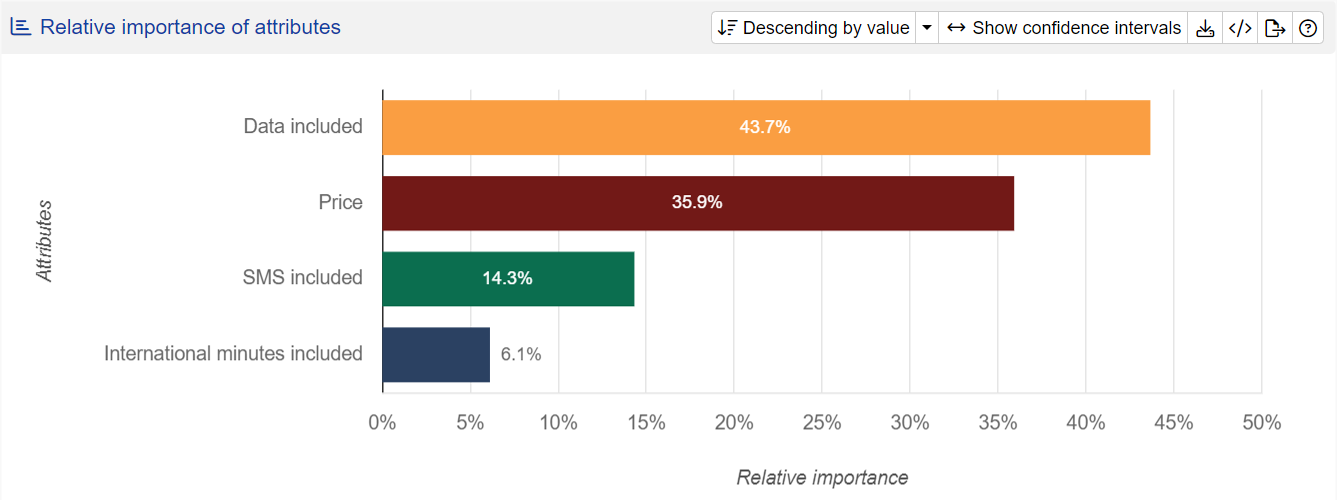
Relative importance of attributes
Do people care about price, data, international calls, or text messages?
Conjointly estimates how important each attribute is relative to the other attributes in customers’ decision-making process.
For example, imagine you are investigating price (specifically $30, $50, or $70 per month) and SMS inclusion (300 messages or Unlimited) for mobile phone plans. If the variation in data inclusions sways customers three times as much as variations across international minutes inclusions, the relative importance score of data inclusion will be thrice as high as that of international minutes inclusion.
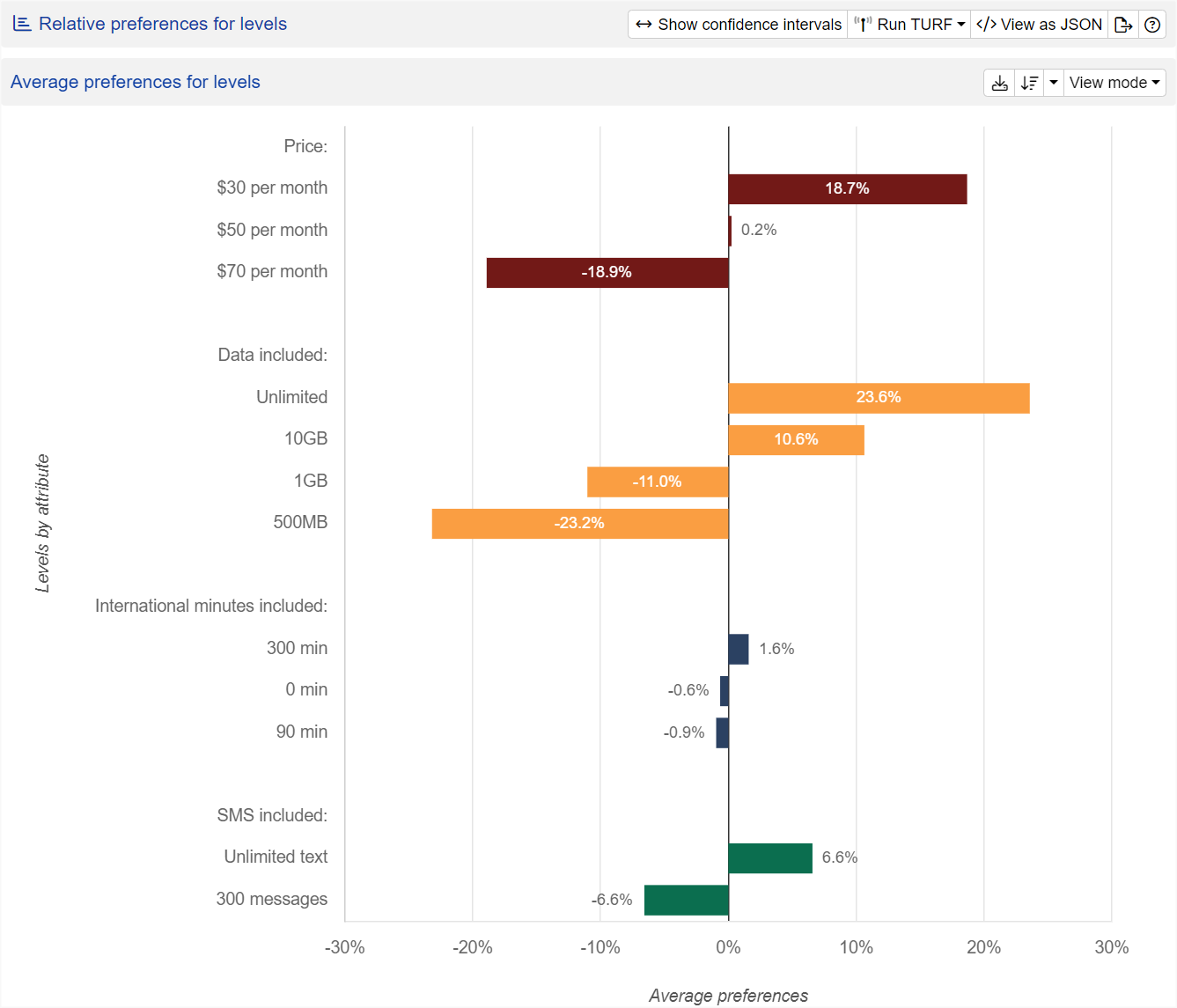
Relative value by levels
Is 300 min of international calls much better than 90 min?
Each level of each attribute is also scored for its performance in customers’ decision-making. For example, if low price ($30/mo) is seen favourably (relative to the other pricing options), it will show as positive. High price ($70/mo) can be least favourite and will be showing up as negative, while moderate price ($50/mo) can be in the middle showing as either low positive or low negative. The sign of the performance score of each attribute is only relative to the other options respondents faced - $70/mo can be negative when compared with $30/mo and $50/mo, but might show up as positive relative to $90/mo.
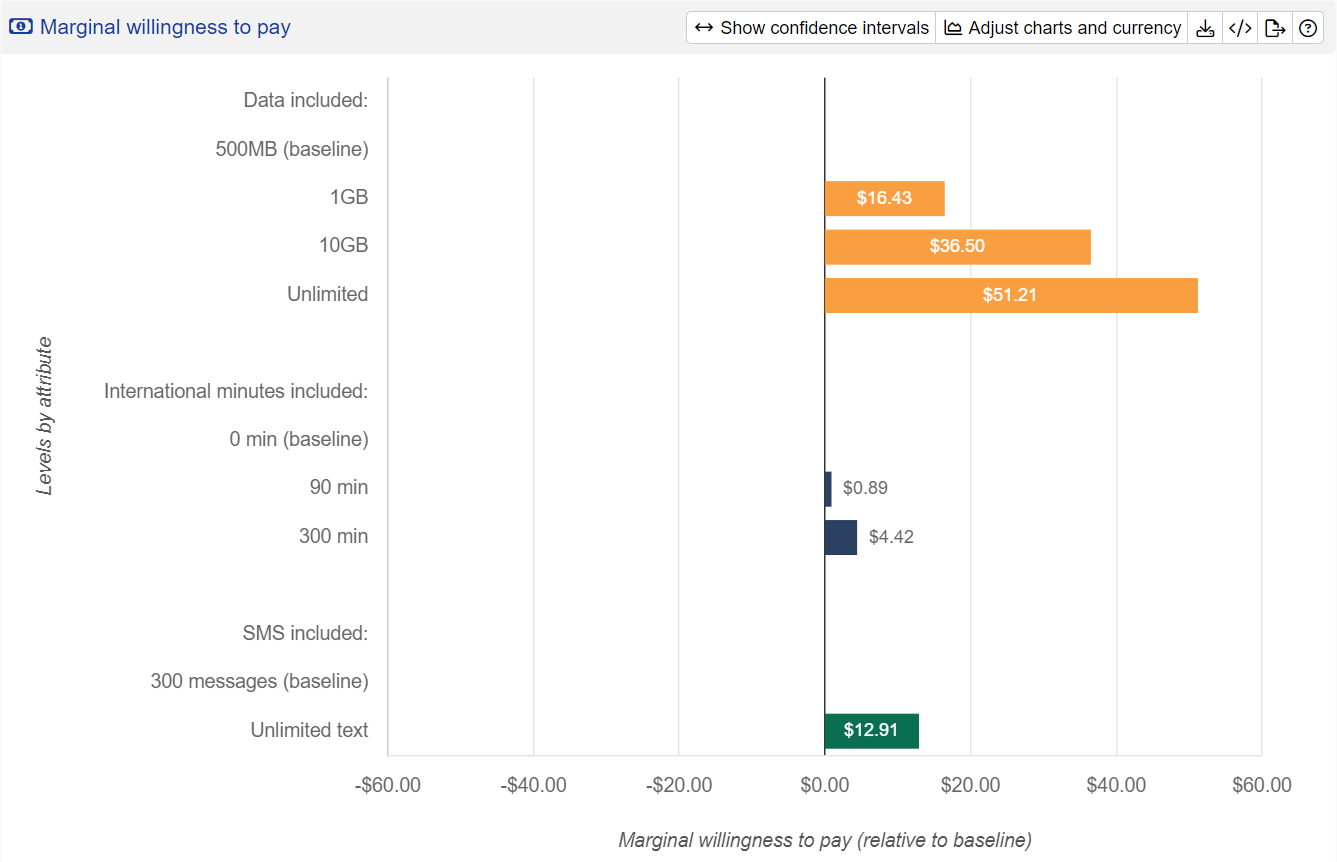
Marginal willingness to pay
How much are consumers willing to pay for a feature?
For experiments where one of the attributes is price, Conjointly will calculate how much each of the levels is worth to customers. For example, inclusion of unlimited text messages (as opposed to the ‘baseline’ of 300 messages per month) can be shown to be as effective in increasing buyers’ uptake as lowering the price by $12.42. Thus, marginal willingness to pay is about substitution of a feature for a price change.
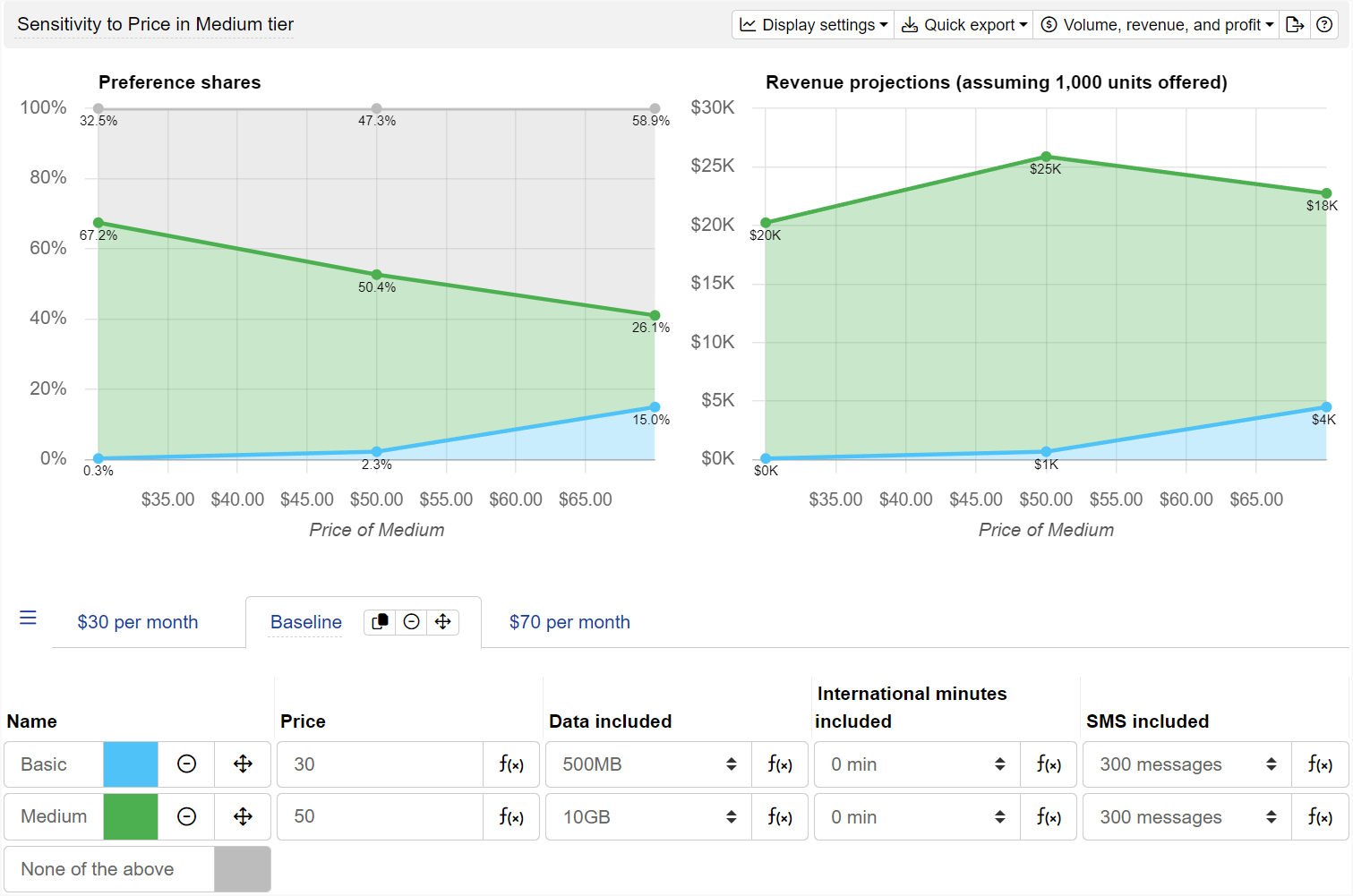
Share of preference simulation
Estimate share of preference based on customers' revealed preferences.
You can run "what-if" scenarios to see how consumers will behave if you change features of your product. Learn more about preference share scenario modelling.
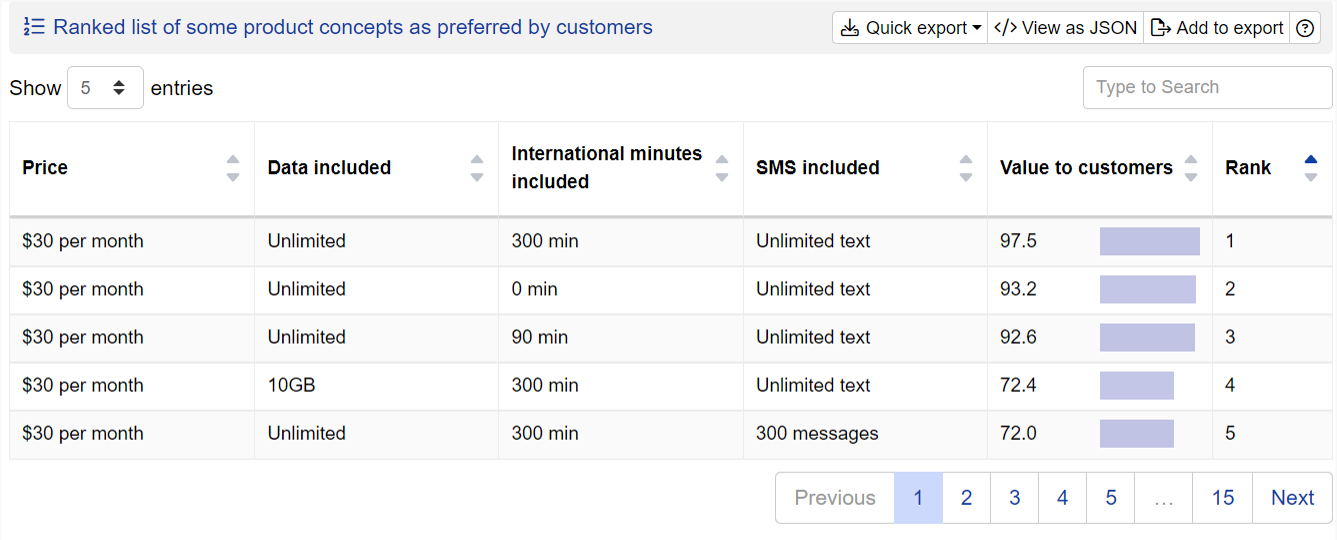
Ranked list of product constructs
List all possible level combinations and rank them by customers' preference.
Conjointly forms the complete list of product constructs using all possible combinations of levels. They are ranked them based on the relative performance of the levels that they combine. This module allows you to find the best product construct that your customers will prefer over others.